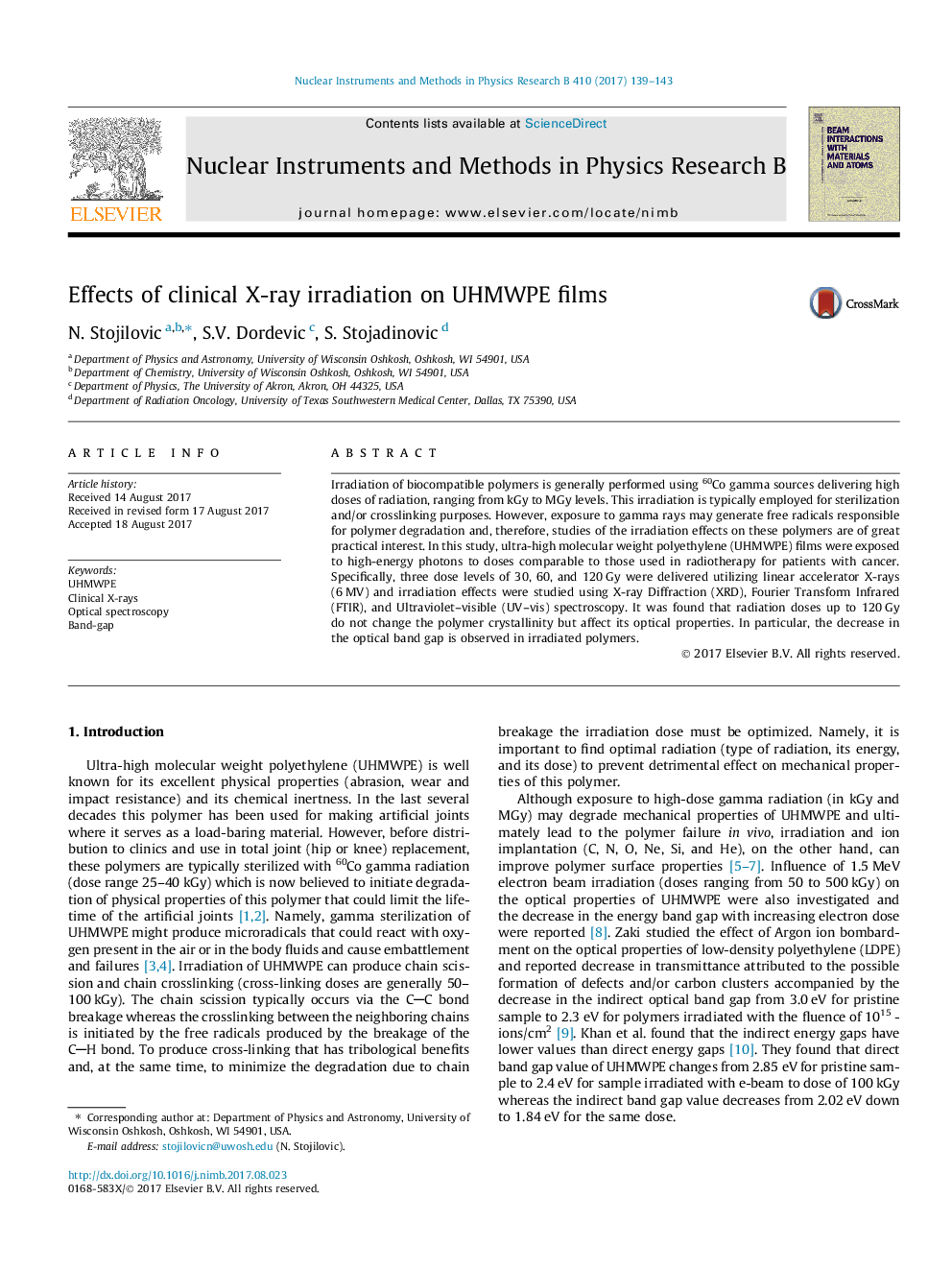| Article ID | Journal | Published Year | Pages | File Type |
|---|---|---|---|---|
| 5467126 | Nuclear Instruments and Methods in Physics Research Section B: Beam Interactions with Materials and Atoms | 2017 | 5 Pages |
Abstract
Irradiation of biocompatible polymers is generally performed using 60Co gamma sources delivering high doses of radiation, ranging from kGy to MGy levels. This irradiation is typically employed for sterilization and/or crosslinking purposes. However, exposure to gamma rays may generate free radicals responsible for polymer degradation and, therefore, studies of the irradiation effects on these polymers are of great practical interest. In this study, ultra-high molecular weight polyethylene (UHMWPE) films were exposed to high-energy photons to doses comparable to those used in radiotherapy for patients with cancer. Specifically, three dose levels of 30, 60, and 120Â Gy were delivered utilizing linear accelerator X-rays (6Â MV) and irradiation effects were studied using X-ray Diffraction (XRD), Fourier Transform Infrared (FTIR), and Ultraviolet-visible (UV-vis) spectroscopy. It was found that radiation doses up to 120Â Gy do not change the polymer crystallinity but affect its optical properties. In particular, the decrease in the optical band gap is observed in irradiated polymers.
Keywords
Related Topics
Physical Sciences and Engineering
Materials Science
Surfaces, Coatings and Films
Authors
N. Stojilovic, S.V. Dordevic, S. Stojadinovic,
